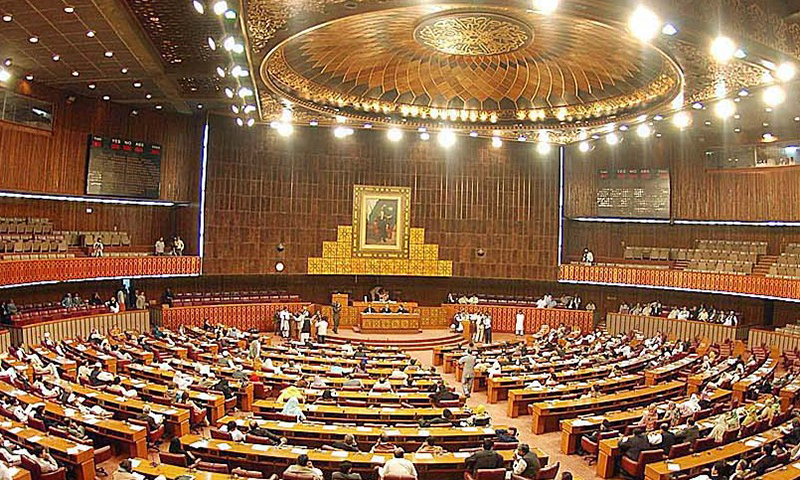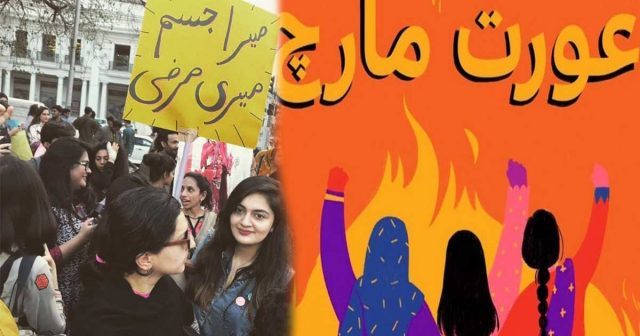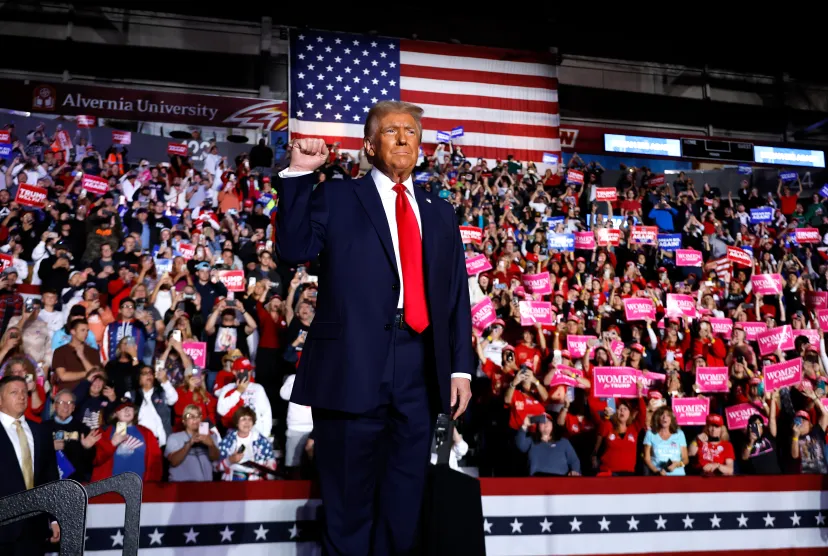A split verdict is evident. The February 8th elections in Pakistan concluded unexpectedly, resulting in a hung parliament with no single party achieving a clear majority. The Pakistan Muslim League (Nawaz) (PML-N) emerged as the largest party, securing 75 seats. However, the real surprise was the strong performance of independent candidates, most of whom were affiliated with the Pakistan Tehreek-e-Insaf (PTI). These candidates, who contested without an official symbol due to the Election Commission’s ruling, secured around 101 seats.
The PTI, led by former Prime Minister Imran Khan, was barred from contesting the election as a bloc due to the party’s legal issues. According to the ECP decision, PTI had failed to hold intra-party elections within the stipulated time. Despite this, the party’s influence was evident in the success of the independent candidates, many of whom were nominated by the PTI. This unexpected outcome has plunged the country into a period of uncertainty, with potential political horse-trading, fragile coalitions, and significant economic challenges on the horizon.
The Pakistan People’s Party (PPP), led by Bilawal Bhutto Zardari, managed to secure 54 seats. The Muttahida Quomi Movement Pakistan (MQM-P) followed with 17 members in the National Assembly. These results indicate a shift in the political landscape, with traditional powerhouses like the PPP and MQM-P being overshadowed by the surge of independent candidates. Both parties have also secured strong positions in the Sindh provincial assembly, where the PPP has acquired a simple majority with 84 members, followed by MQM with 28 members.

As a single party, PPP can easily form the government in Sindh. In Punjab Assembly, PML-N has acquired 137 seats, followed by Independents at 116 seats. Even though PML is short of members to form a government, at least 149 seats are required.
In Balochistan at least 26 votes are required to form a government and PPP and JUI-F have acquired equal or 11 seats each but in case they form a coalition government, they still need 4 more votes. In Khyber Pakhtunkhwa Independents have acquired 83 seats and most of them are considered to belong to PTI as 57 KP seats are required to form a government.
Rigging Allegations Amid Split Verdict
The recent election results in Pakistan have been shrouded in controversy, with allegations of vote rigging and manipulation casting a shadow over the proceedings. Both the Pakistan Tehreek-e-Insaf (PTI) and the Pakistan Muslim League-Nawaz (PML-N) have claimed victory, leading to a tense political climate. The final tally was released nearly three days after the conclusion of the vote, further fueling the controversy.
Candidates linked to the PTI, the party of jailed ex-Prime Minister Imran Khan, won the most seats amid these widespread allegations of vote rigging. However, the PML-N, led by former Prime Minister Nawaz Sharif, is seeking to form a coalition government. The election commission is still compiling results in several constituencies, adding to the uncertainty.
The controversy has led to a flood of petitions challenging the election results in Pakistani courts. Most of these petitions were filed in the Lahore High Court, while two PTI-backed candidates moved to the Islamabad High Court. These petitions allege collusion in the alteration of election results on specific forms, a claim that Pakistani officials have denied.
Despite the PTI-backed candidates securing the most seats, analysts agree that it would be a challenge for PTI to form a government without a simple majority. The final results have put independent candidates backed by the PTI ahead of the PML-N, with independents winning 101 of the National Assembly seats, 93 of which went to PTI-backed candidates.
However, the election results also represent a significant moment in Pakistan’s political history. The rise of independent candidates could potentially herald a new era of political dynamics in the country. This shift could lead to a more diverse political landscape, with the Karachi-based MQM party making a surprising return in the polls, winning 17 seats, and potentially playing a role in any coalition.
Despite the challenges and controversies, these election results could mark the beginning of a new chapter in Pakistan’s political history. However, experts have warned that Pakistan may be facing a “prolonged period of political instability”. The outcome of the legal challenges and the formation of the new government will be crucial in determining the future political trajectory of the country.
Sympathy Wave Buoys PTI Despite Controversies
The Pakistan Tehreek-e-Insaf’s (PTI) exclusion from the ballot under its banner, due to internal election irregularities, was anticipated to significantly undermine its electoral strength. This situation arose from the Election Commission’s decision, which led to the PTI losing its election symbol—a cricket bat—amidst a broader crackdown that saw dozens of its leaders arrested or allegedly abducted, and its campaign materials removed.
This crackdown was part of a wider allegation of politically motivated actions aimed at sidelining Imran Khan and his party from the political arena.
Contrary to expectations, the denial of the PTI’s symbol and the last-minute conviction of key party leaders did not weaken the party’s appeal. Instead, these actions triggered a wave of sympathy, particularly among younger voters who are drawn to Imran Khan’s anti-corruption message. This unexpected turn of events suggests that the efforts to marginalize the PTI may have backfired, bolstering public support for the party and painting it as a victim of political injustice.
The sympathy wave was further fueled by widespread allegations of vote rigging and manipulation, with PTI-backed candidates and their supporters accusing the military, judiciary, and election commission of colluding against them. Despite these challenges, PTI-backed candidates secured the most seats in the election, a result that was unexpected given the scale of the crackdown against the party.
This phenomenon of increased support in the face of adversity is not uncommon in politics, where parties or individuals facing suppression often gain public sympathy. In the case of PTI, the crackdown, combined with Imran Khan’s imprisonment and the allegations of political motivation behind the legal actions against him and his party, appears to have galvanized a significant portion of the electorate.
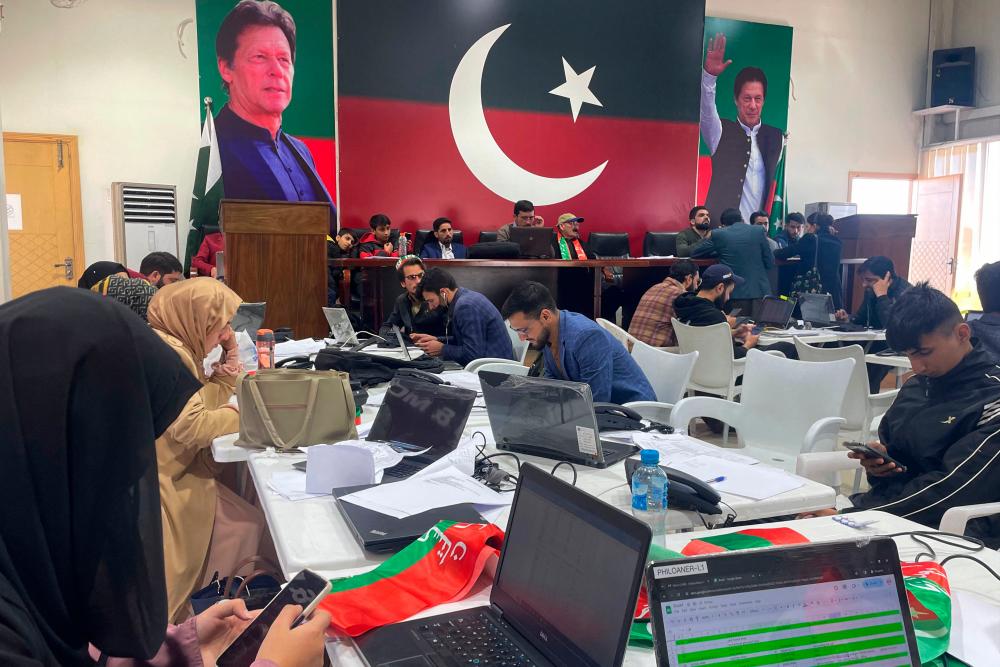
This support was particularly pronounced among the youth, who are often more responsive to anti-establishment and anti-corruption narratives.
The final election results, which saw independent candidates affiliated with PTI securing the most seats, underscore the complexity of Pakistan’s political landscape and the unpredictable nature of voter sentiment. Despite being barred from participating under its banner and facing significant legal and political challenges, PTI’s influence remained strong, suggesting a deep reservoir of public support transcending traditional political barriers.
This outcome also highlights the potential for political dynamics in Pakistan to shift in unexpected ways, with the rise of independent candidates and the enduring popularity of figures like Imran Khan signalling a possible realignment of political forces in the country.
However, the aftermath of the election, marked by legal challenges and allegations of vote rigging, indicates that Pakistan may be entering a period of prolonged political instability, with the path forward for the country’s governance remaining uncertain.
A Tale of Two Failures
During its tenure in power, the Pakistan Tehreek-e-Insaf (PTI) party fell short of expectations, particularly in addressing the escalating economic crisis. The party’s inability to curb inflation, stimulate income growth, and prevent the economy from spiralling into a deeper crisis was a significant disappointment. This economic downturn was marked by rising prices, stagnant wages, and a widening gap between the rich and the poor, which led to widespread public dissatisfaction.
Following the PTI’s tenure, the Pakistan Democratic Movement (PDM)-led coalition government took over in April 2023. However, this administration also proved to be ineffective in tackling the country’s economic woes. Like its predecessor, the PDM-led government struggled with rampant inflation, stagnant incomes, and a deepening economic abyss. The inability of both administrations to address these issues led to public disenchantment with the established political forces.
This widespread dissatisfaction with both the PTI and the PDM-led coalition government likely contributed to the rise of independent candidates in the recent elections. Many of these independents are former PTI members who have distanced themselves from the party due to its perceived failures. Their rise suggests a shift in the political landscape, with voters increasingly looking beyond traditional party lines in search of effective leadership.
The election results, which saw independent candidates affiliated with PTI securing the most seats, underscore the complexity of Pakistan’s political landscape and the unpredictable nature of voter sentiment. Despite the PTI’s perceived failures and the public’s disenchantment with the PDM-led coalition government, these independent candidates were able to capitalize on the public’s desire for change and their dissatisfaction with the status quo.
This outcome also highlights the potential for political dynamics in Pakistan to shift in unexpected ways, with the rise of independent candidates signalling a possible realignment of political forces in the country. However, the aftermath of the election, marked by legal challenges and allegations of vote rigging, indicates that Pakistan may be entering a period of prolonged political instability, with the path forward for the country’s governance remaining uncertain.
Split Verdict and Economic Woes Looming Large
The prospect of a hung parliament in Pakistan looms large, casting a shadow over the nation’s already fragile economic situation. The potential of a coalition government, which is inherently susceptible to compromises and often lacks a strong mandate, may find it challenging to implement the critical reforms and bold decisions that are crucial for securing an International Monetary Fund (IMF) bailout.
The first day after the February 8 general elections witnessed a plunge into the key PSX-100 index at the Pakistan Stock Exchange, which shed over 1200 points on the last day of the business week on Friday. Similarly, Pakistan’s dollar bonds fell after poll results were delayed in the South Asian country amid a shutdown in mobile services.
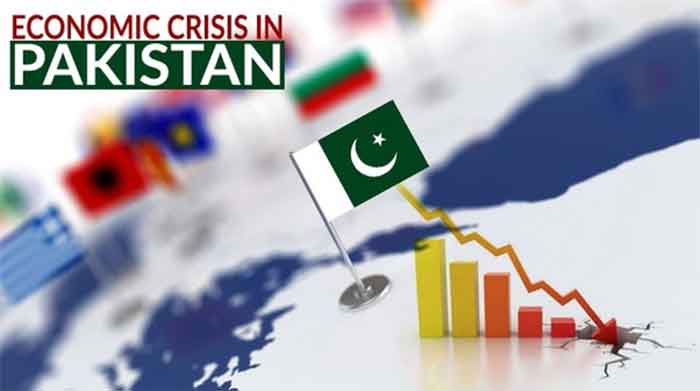
Bonds due in 2051 were indicated as much as 5 cents lower — the most since September 2022 — to trade at 60.8 cents on the dollar, while the 2029 and 2031 notes also dropped.
Pakistan is in dire need of a more substantial financial package than the recent stopgap measures to stabilize its economy. The country must not only repay existing loans but also navigate the turbulent waters of global economic uncertainty. The current economic crisis, characterized by decades-high inflation and a struggling economy, has left Pakistan in a precarious position.
Former Prime Minister Nawaz Sharif has called for a unity government as the nation heads towards a hung parliament, indicating the need for a collaborative approach to governance in the face of such economic challenges. The early vote results showed the main political parties neck and neck, with no clear winner emerging, which has led to complex coalition negotiations.
The hung parliament and the subsequent political wrangling could further complicate Pakistan’s ability to address its economic issues effectively. With the military’s significant influence in the country’s politics and the rise of Islamist militancy, the situation is further complicated. Relations with neighbouring countries—India, Afghanistan, and Iran—are also strained, adding to the nation’s list of challenges.
In this context, the ability of any future government to take decisive action to secure international financial support and implement economic reforms is critical. The success of these efforts will be key to Pakistan’s economic recovery and its ability to withstand the pressures of global economic trends.

